Every piece of jewelry is infused with the soul of the designer and the maker. Do you know what craft they use?
11 kinds of jewelry surface treatment technology
1. Lathes-carved flowers technology
Lathes-carved flowers technology can make jewelry add exquisite decorative patterns so that jewelry has a three-dimensional sense and a sense of hierarchy. The surface is bright and shining, the combination of designs is more robust than usual. Gold, K gold, and platinum jewelry based on Lathes-carved flowers technology are loved by the crowd of personality publicity.
 lathes-carved flowers Gold bracelet
lathes-carved flowers Gold bracelet
2. Polishing process
The polishing process makes the surface of the jewelry look more mirror-like and can show a bright metallic luster. Polished K gold, platinum, gold jewelry look shinier than before.
 Polished gold plated rose pendant
Polished gold plated rose pendant
3. Sandblasting process
Sandblasting technology can make jewelry richer and delicately soft, rough surface, hazier and smoother. At present, most gold ornaments and k-gold ornaments on the market will use sandblasting technology to enhance the artistic beauty of the decorations.
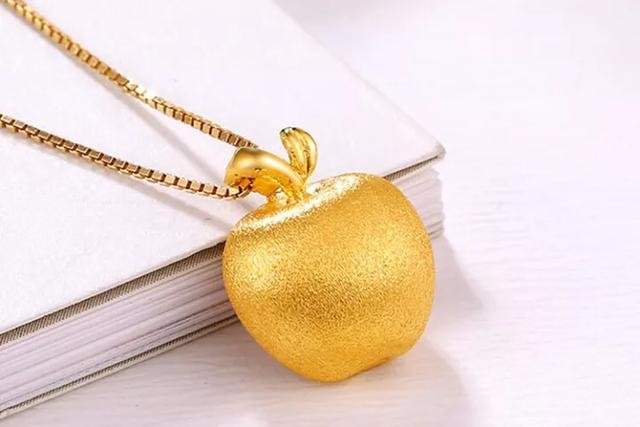 Sandblasting Apple pendant necklace
Sandblasting Apple pendant necklace
4. Sand nail technology
The concrete surface of the sand nail process is a reflection point, and the sand nail surface forms the good shining effect of the stars. The nail sand process under the jewelry surface is rougher than sandblasting. And however, more refraction surface looks very shiny. Many gold jewelry will use nail sand and polishing collocation, a firm and a soft highlighting the product’s three-dimensional sense and sense of layers. The sand nail process is one of the most common surface treatment processes on the market.
 sand nail Five pointed star pendant gold necklace
sand nail Five pointed star pendant gold necklace
5. Sand pushing process
Push the sand surface to form a silky smooth matte effect. Use sandpaper to push and pull friction on the gold surface to create a flat surface.
 sand pushing Gold-plated ring
sand pushing Gold-plated ring
6. Common wire drawing process
The brushed surface shows the effect of a shining silk line arrangement. Which makes gold and k-gold jewelry not easy to be scratched, enhancing the texture and delicacy of gold. Principle of the process: the imported sand drawing knife pulls the surface of precious metal uniformly and directionally to form a three-dimensional surface of extinction brushed jewelry.
 Common wire drawing process
Common wire drawing process
7.Colorful wire drawing process
The gold headgear that passes seven colors to pull silk craft to make, below lamplight can unreal change the color of rainbow profusion. The visual effect is highly flowery. Expensive spirit is dyed-in. Treatment: A robotic drill draws strips of colored filamentous lines on the gold surface.
 Colorful wire drawing process Gold bracelet
Colorful wire drawing process Gold bracelet
8. Matte process
The lines and edges used for the edge of the smooth jewelry make the gold jewelry more distinct and three-dimensional. Treatment: Rub the jewelry part with an agate knife to smooth and brighten the gold surface.
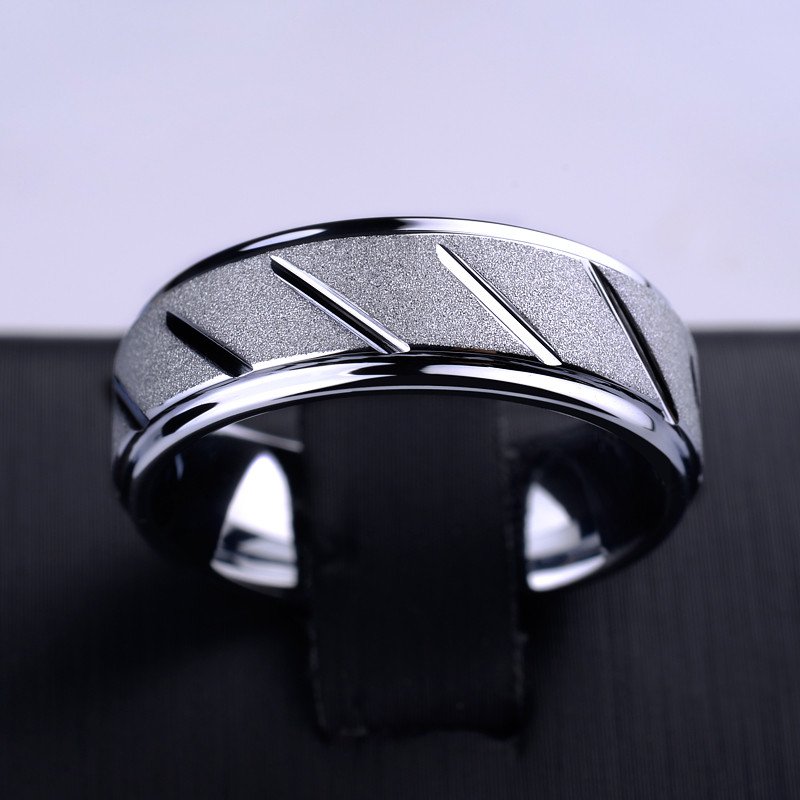 Tungsten gold electric white ring
Tungsten gold electric white ring
9. stamping process
The stamping process, also known as die stamping, embossing, is a relief pattern manufacturing process. The process is: a mold is made from a mother mold, and then pressure is applied to the metal to create a relief pattern. Stamping process: embossing patterns, forming (bending), the connection together. The stamping process is suitable for the bottom concave and convex ornaments, such as small lock pieces, or not clear ups and downs, easy to be divided into two or more steps of stamping molding or combination of items.
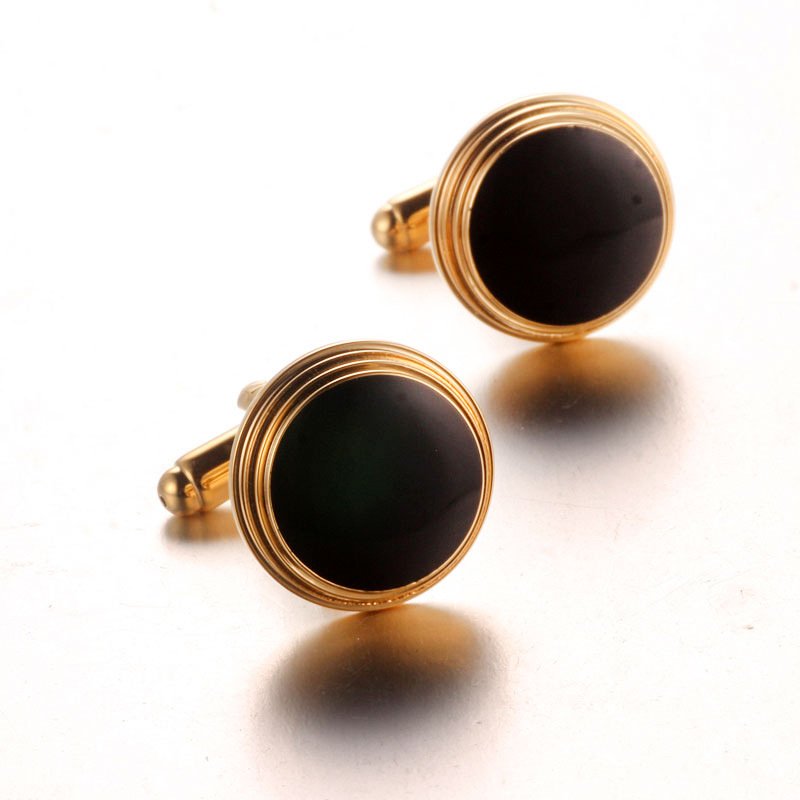 Brass earrings
Brass earrings
10. Manual craft
Manual craft, be said to be a traditional Chinese jewelry-making skill, can be an epitome of the development of the excellent folk art of the Chinese nation and can be called a “model.” Gold jewelry Manual craft fully shows the artisan’s artistic cultivation and infinite creativity and the eternal charm of the excellent traditional culture of the Chinese nation.
 Manual craft Square pendant
Manual craft Square pendant
11. Laser laser
A laser is a continuous laser beam of high energy generated by the laser generator. A high energy density laser on the workpiece for local irradiation is converted from light to heat energy. The material’s surface instantaneously melts and even makes the material’s surface vaporized. Finally, color change to form a graphic mark.
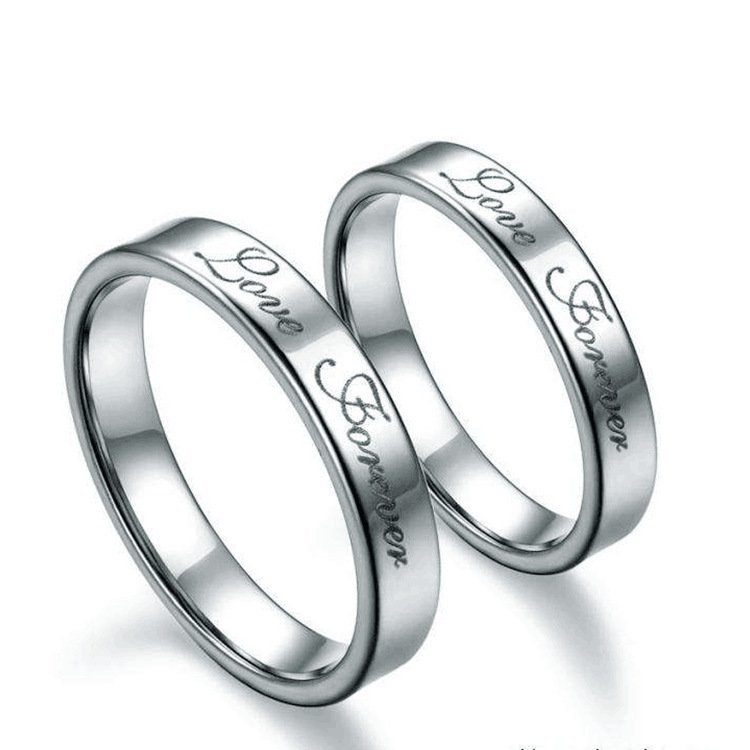 Plated platinum laser engraved ring
Plated platinum laser engraved ring
7 kinds of jewelry making technology
1. Casting process
Casting technology is a method of mass production of jewelry by casting machines. This method has the advantages of improving efficiency and reducing cost. The processing procedure is as follows: 1. Make rubber mold according to jewelry design sample 2. Make wax mold by injecting wax with rubber mold 3. Plant the wax molds into wax trees. 4. Inject the cylinder with wax trees into the plaster to make plaster molds 5. Put the gypsum mold into the oven to dry, and heat until the gypsum mold is dewaxed 6. Put the molten gold into the gypsum mold 7. Clean go gesso, undertake to polish again, enchase can.
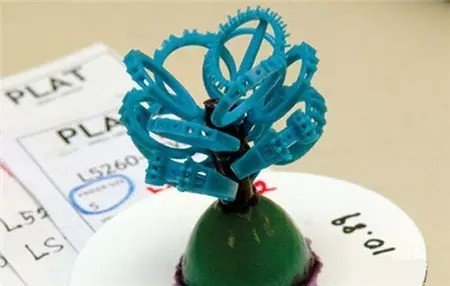 Wax tree
Wax tree
2. Electroforming process
Electroforming is a modern technology that uses electric current to reduce metal ions in electroforming solution to metal atoms gradually. In the gold electroforming process. The gold ions are electricity flows through the principle of electrochemical reduction into gold atoms and deposition in Yin polarity of wax on the surface. When the deposit to a certain thickness of 0.2 to 0.4 mm takes almost a day, it can be removed from the electroforming liquid. It was then drilled to be preserved with hot water soluble and caster with hot nitric acid clean electricity inside. After being cleaned and dried with water, it becomes an electroforming product. Finally, it becomes a jewelry product after being polished. The beloved 3D hard gold is produced mainly in the “electroforming” mode. It significantly improves gold’s hardness and wears resistance. By enhancing the gold content, PH value, working temperature, organic light agent content, and agitation speed in the electroforming solution.
 Different shapes 3D hard gold
Different shapes 3D hard gold
3. The machine weaving process
Weaving is to use a particular machine to do the process of weaving chain, can be integrated into a long necklace, water ripple, square water wave, cross-chain are made with the machine.
 The chain of suuare water wave
The chain of suuare water wave
4. Chisel flower technology
A flower is one of the ancient Chinese traditional metalworking technology. Flower craft is comparatively smooth, on both sides of metal with a small hammer percussion size jewelry, leaving chisel marks on the metal surface. The formation of various textures, textures, and lines, embossed or carved. Make the single metal surface produce the multi-level three-dimensional decorative effect, creating intricate patterns. Patterns are deep and shallow, full of artistic appeal.
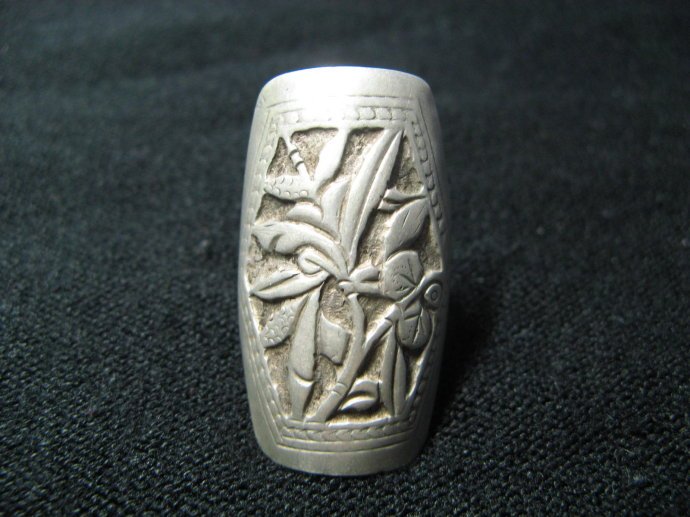 Ancient Chinese chisel flower ring
Ancient Chinese chisel flower ring
5. Silk technology
The gold and silver are processed into silk and then made into gold and silver jewelry through the steps of bending, pinching, filling, and stacking. The different decorative parts can be made into silk patterns, arch silk, bamboo silk, wheat silk. Production methods can be divided into pinch, fill, save, welding, pile, base, weaving, weaving.
 Filaments jewelry
Filaments jewelry
(1)Pinching silk is a groove made of silk, pinching plum blossom, peony, birds, dragons and phoenixes, pavilions, terraces and pavilions, and other patterns.
(2) Filament filling is to fill the design outline with the pinched and flattened filament
(3) Saving welding is the process of putting together the patterns made and forming a piece of finished jewelry through welding.
(4) stacking is the process of stacking charcoal ash to wrap the coded wire evenly on the charcoal ash shape. Base various forms, and sieve the powder evenly and weld it well.
(5) Weaving is to weave the gold and silver wire edge patterns and shading of different shapes, and then stick on the shading to make different flower patterns produced by various technological methods, completed by welding.
6. Blue burning process
The cloisonne craft is similar to the point green craft. The blue burning process is not an independent work but an extra work of jewelry to ornament, decoration, increase color beauty and appear in the jewelry industry.
 Blue burning Gold petal pendant
Blue burning Gold petal pendant
7. Inlaying process
The inlaying process is the primary process for making jewelry. When K gold and platinum are combined with gemstones, the inlaying process is usually used to present the brilliancy and beauty of gems. Jewelry cannot be worn on people’s necks, wrists or fingers without the exquisite inlay. To make jewelry vivid as works of art, generations of artisans have created many ways to set jewelry over the past hundred years.
10 Ways to Set gems in Jewelry
1. Claw setting
The claw setting is the most common and classic inlay method, which uses a metal claw to hold the stone tightly. Its most significant advantage is that the metal rarely blocks the gem, can clearly show the beauty of the gemstone, and favorable light incident and reflection from different angles. The glory looks bigger and brighter so that the beating light is fully exposed. Generally, the claw set can be divided into six claw sets, four claw sets, and three claw sets. Now, the wedding ring is the most popular with six claw crowns. By six claw holding up the gem high, the light can illuminate the treasure from all around, make the rock appears very glittering and translucent get rid of luxuriant noble. Its appearance resembles the crown and gets its name. Princess square stones are generally set with four claws. The claw size is the same, the interval is even, and the gemstone table is not tilted horizontally.
 18K gold four-claw diamond ring- claw setting
18K gold four-claw diamond ring- claw setting
2. Bezel setting
Wrapping and inlaying is the inlaying method that uses the metal edge to surround the gem. It is the most stable and traditional inlaying method, which fully shows the bright light of the catch with a gentle and dignified temperament. Generally, a plain gem (ruby, sapphire, moonlight stone, jade) often uses the method of package set. Because this kind of gem is more significant, with the claw set not firm. Careful observation is needed when choosing a bag; the bottom of the gemstone tip should not be exposed from the bracket. Otherwise, it will scratch the skin or damage the gem. If the back cover is set, a small hole in the center will adjust the gem face position. There should be no gap between wrapping edge and gem, smooth and smooth.
 Sapphire and white gold ring- bezel setting
Sapphire and white gold ring- bezel setting
3. Pave setting
Nail inlay uses the ductility of metal, directly on the edge of the metal material inlay with tools chisel several small nails, to fix the gem. There are no metal claws on the surface to hold the stones in place. The tightly arranged stones are actually inside metal mortises. This kind of setting depends on the consistency of size and height of the rocks. Because the stones are not surrounded by metal, they can penetrate and reflect more light, dazzling the jewelry. A nail set is used for group set jewelry and becomes the luxury money ornament.
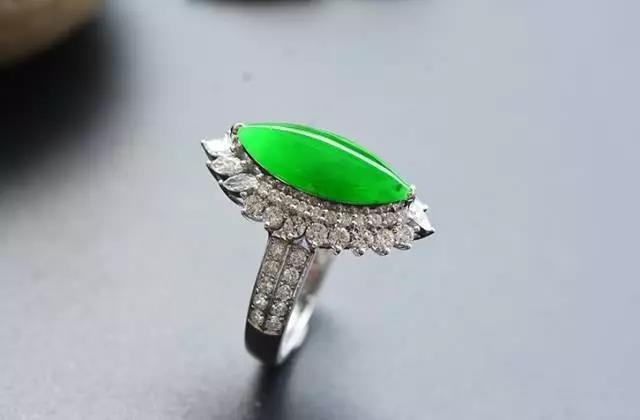 Set with emerald and white gold ring- pave setting
Set with emerald and white gold ring- pave setting
4. Channel setting
Groove setting, also known as clip setting or track setting, is often used to set a row of small stones of the same size. This setting technique uses two metals to hold the stone from either side. Used to set round, rectangular and square stones. The groove is like a rail with a gem in the middle. The jewelry produced by this Mosaic method is smooth in appearance, beautiful and straightforward in distribution, and makes the whole jewelry more luxurious and precious.
 18K white gold diamond ring- channel setting
18K white gold diamond ring- channel setting
5. Stuck setting
The card inlay is a kind of inlay method that uses the tension of metal to fix the waist or the waist and the bottom tip of the gem. Which is also a relatively new inlay method nowadays. The glory is more exposed than the claw, showing the complete picture of the treasure to the maximum extent, making people feel the gemstone suspended in the air and a strong visual impact. In the past year or two, the combination of card inserts and claw inserts has changed the endless charm of the jewelry.
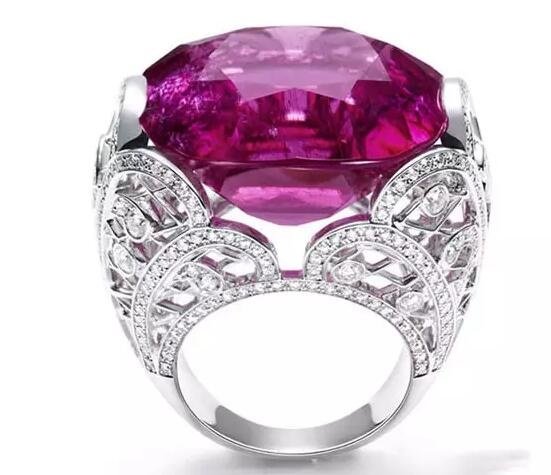 Ruby ring- stuck setting
Ruby ring- stuck setting
6. Invisible setting
The rimless setting, also known as “hidden track setting,” is a stone setting process without metal welding between gemstones. The neat thing about this technique is that the veneer is completely hidden from view when looking down on the work, leaving no trace of the groove. This technique is complicated to master, starting with the cutting and grinding of gems. Achieving the effect of no gap requires a skilled cutter to carry out a unique precision cutting for each glory after precise calculation. Which is far more complex than any cutting method. It requires that the size of the gem, cut highly consistent. The error is not more than three parts per thousand. Another difficulty lies in the setting. In the jewelry inserts, the edge inserts require the final precious metal inserts to achieve a perfect balance of hardness and toughness to ensure that the gem gets a stable grip. Then in mold making, mold turning, mold casting, mold holding, stone inserts, and other links need to be carried out in strict accordance with the precise standard. Which is beyond ordinary jewelry manufacturers.
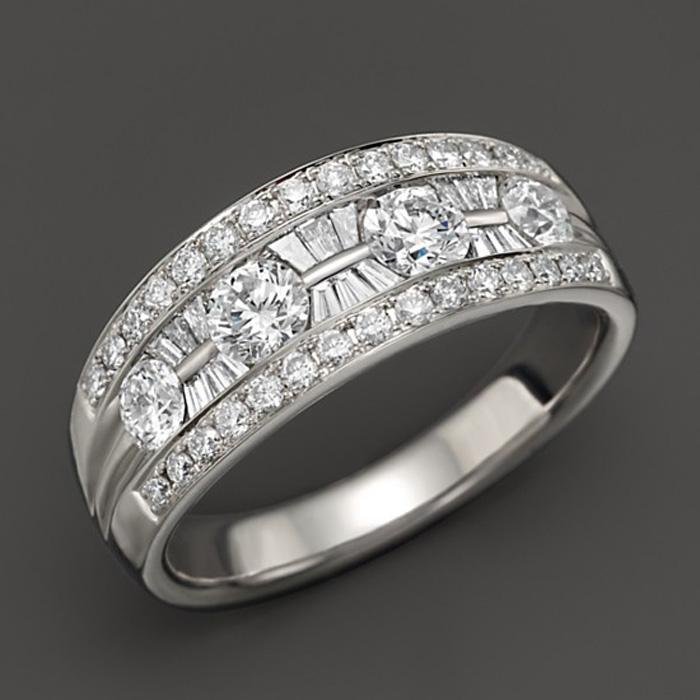 18K white gold diamond ring – Invisible setting
18K white gold diamond ring – Invisible setting
7. Micro-pave
The micro-pave is a new kind of Mosaic jewelry technology. Compared with another way of Mosaic, tightly inlaid between gem microscope, it is a Mosaic in 40 times under a microscope. With claw is very small, do not show metal. It is not easy to distinguish with the naked eye. After the stone with a feeling of floating can better reflect the luster gems. At the same time, the use of small stones to show large surfaces, the performance of the curved surface of the product style has a unique advantage. So that the product style looks full of riches and wealth and luxuriant, the overall sense of the expression is vital. The surface is very soft so that the product is more flashing, more three-dimensional, more rounded, like a wave of light flow. The micro nail setting process is usually inlaid with round gemstones, which has very high requirements on the size, color, and clarity of gemstones used in products.
 Earrings with coloured gemstones and white gold and diamonds- Micro-pave
Earrings with coloured gemstones and white gold and diamonds- Micro-pave
8. Fly-edge setting
The fly-edge setting, also known as the Italian setting, combines edge and nail sets. While a metal border surrounds the stone, it is held in place by several scooped nails. Because the metal edge around the stone is too low to cover the gravel completely, the trim only positions the stone. In contrast, the stud serves to hold the stone in place. The number of inserts around a gem can vary from 3 to 6. Generally, the more inserts there are, the smaller the inserts. The fly-edge setting is mainly used for the set of faceted gems. Which can keep the original size so that the rocks are not easy to hook clothes and avoid the situation of the tiny waist of gems caused by edge setting.
 Pink gem platinum diamond ring- Fly-edge setting
Pink gem platinum diamond ring- Fly-edge setting
9. Aperture setting
Aperture inlay is also called buried inlay, wipe inlay, similar to wrap inlay in technology. The gem is deep into the ring metal bowl. The edge is surrounded by metal inlay. The stone has a sunken metal rim that shines like a halo. The presence of a metallic ring visually enhances aperture inserts, and the circular ring also has some decorative effects.
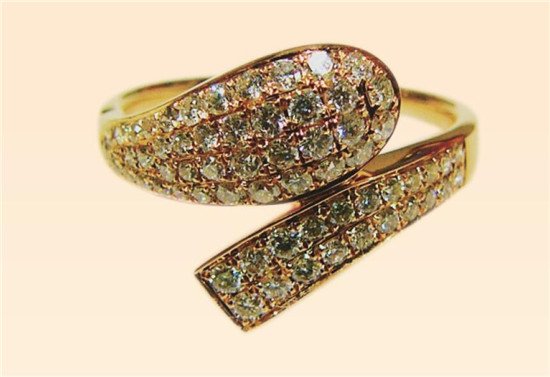 Snake-like gold and diamond ring- Aperture setting
Snake-like gold and diamond ring- Aperture setting
10. Around the setting
Wrapping is the setting technique of winding gemstones with metal wire. Winding is often used for the inlaying of beaded or random jewels. Some art and popular jewelry also adopt this inlaying technique to pursue a more special technological effect.
 Gem ring- Around the setting
Gem ring- Around the setting
We understand that a piece of jewelry needs so many processes, from design to finished product! I need to go through many craftsman’s hands to complete. It is not easy! The artistic sense presented by the work and the beauty of the creation of jewelry craft, these two characteristics of jewelry can be said to be the common goal of everyone who loves jewelry. The design inspiration usually comes from real life. In the form of imitation, every bit of real life, such as the nature of animals and plants, human emotions, is transformed into extraordinary jewelry work.